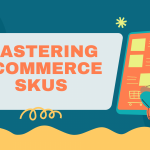The area of personalization is transforming the relationship between a brand and the consumer, whether it be product recommendation or custom-tailored shopping experience. Although it brings in convenience and loyalty, it brings important concerns relating to the use of data and consumer trust. This paper will discuss how businesses can utilise the advantages of personalisation without breaching privacy and balance it reasonably.
Introduction
This increasingly personalised customer experience is transforming contemporary customer experiences Netflix recommends shows you didn’t know you’d love, Spotify curates playlists that match your mood, and Amazon uses personalization with ai to suggest products based on your shopping habits. These are a few examples of how efficiency and delight can be done at scale via personalization.
The business argument is equally as strong. According to McKinsey, ai personalization can increase revenue by up to 40 percent higher than brands that lag in this area. Companies also see repeat purchases rise as consumers feel understood and rewarded through personalization ai systems.
Trust is at a precarious position According to a Deloitte study, 68 percent of consumers feel afraid of being deceived by AI powered content. This poses a paradox wherein, even though the enhancement of loyalty and conversions through ai personalization is shown, consumers become more likely to ask permission and more transparent approaches as well as an increased level of privacy safety precautions.
What Is AI Personalization?
At its core, ai personalization uses machine learning and data analysis to deliver experiences that adapt in real time. Unlike traditional personalization, which relied on static customer segments and broad rules, ai powered personalization continuously learns from individual behavior, preferences, and context. This makes it more accurate, timely, and dynamic than legacy approaches.
For example, an eCommerce platform powered by ai-powered personalization can analyze browsing history, past purchases, and even micro-interactions to recommend products at the perfect moment. An ai based personalization engine doesn’t just categorize customers into groups; it predicts intent and adjusts messaging, pricing, or promotions instantly.
There are countless ai personalization examples in today’s digital ecosystem. Streaming services like Netflix tailor recommendations frame by frame, while fashion retailers dynamically update product pages to highlight styles most likely to convert. In marketing, companies use personalization ai to craft individualized emails or targeted ads that outperform generic campaigns.
This shift toward ai personalization isn’t just about convenience. It represents a fundamental change in how brands communicate — moving from one-to-many to truly one-to-one engagement. By leveraging machine learning, companies can offer experiences that feel human, even when delivered at massive scale.
How AI Personalization Works Behind the Scenes
Behind every recommendation on a website, streaming platform, or retail app lies a carefully designed process. AI personalization works by collecting, analyzing, and transforming customer data into meaningful actions that feel almost human.
Step 1: Data Collection
It begins with data. Browsing history, purchase records, demographics, and behavioral signals are gathered continuously. Even subtle actions — like hover time or scroll depth — are inputs for ai for content personalization. This wide dataset gives businesses the raw material needed to understand intent.
Step 2: Data Analysis
Machine learning models then examine the data to find hidden patterns. With ai content personalization, these systems can anticipate needs instead of waiting for explicit actions. For example, a retail site might detect when a shopper is comparing sneakers and proactively suggest complementary socks or running gear.
Step 3: Actionable Output
Insights translate into real-time experiences. Through ai-driven personalization, web pages reorganize product grids, and email campaigns change subject lines automatically. This ai driven personalization ensures every interaction feels relevant, reducing friction and increasing conversion rates.
Step 4: Continuous Learning
Finally, an ai-powered personalization engine improves with every interaction. Each click, purchase, or abandoned cart trains the system, creating a feedback loop that sharpens recommendations over time.
The Privacy Dilemma: Can You Trust Your AI?
The benefits of ai personalization are undeniable: faster product discovery, tailored recommendations, and experiences that feel unique. Yet those same benefits raise an uncomfortable question — how much data should companies really collect?
AI systems rely on detailed browsing history, purchase records, demographic information, and behavioral signals. While these inputs make personalization with ai more effective, they also create risks. Customers often wonder whether their data is safe, who controls it, and if it could be misused for manipulation rather than service.
Ethical Concerns and Regulation
The ethical debate centers on transparency. Without clear communication, customers may feel watched rather than supported. Regulations like GDPR in Europe and CCPA in California now demand explicit consent, the right to access collected data, and the ability to request deletion. For businesses, compliance is no longer optional — it is the foundation of trust.
The Tipping Point
The dilemma is not about whether ai personalization works but whether it goes too far. When every move feels tracked, customers may pull back, abandoning brands that cross the line. Companies must ask themselves: is the short-term conversion worth the long-term erosion of trust?
Forward-thinking providers such as Bintime emphasize responsible personalization ai strategies. By embedding ethical principles into design, they prove that personalization can coexist with privacy — but only if businesses make transparency a priority.
How to Balance AI Personalization with Customer Privacy
Balancing innovation with responsibility is the biggest challenge of ai personalization. Customers want experiences that feel unique, but they also want assurance that their data is handled ethically. The solution lies in designing personalization strategies with privacy at the core.
- Transparency and Control: Brands must explain what data is collected and how it is used. Clear privacy dashboards allow customers to adjust preferences or opt out. This builds trust and strengthens long-term loyalty.
- Consent First: A customer-first approach means prioritizing explicit consent. Before rolling out ai for personalization, businesses should ensure every user understands the benefits and risks. Asking for permission upfront signals respect.
- Data Minimization: Instead of collecting everything, companies can adopt ai based personalization models that rely only on relevant data. Limiting collection reduces exposure in case of breaches and shows customers that brands value restraint.
- Privacy-Preserving Technologies: Emerging tools such as federated learning and differential privacy allow models to learn from user behavior without storing raw data centrally. These technologies make ai-driven personalization both effective and safer.
- Partnering with Experts: Many organizations lack in-house expertise to build ethical frameworks. Collaborating with providers of AI consulting services ensures that systems are both innovative and compliant.
Positive Examples
Apple limits tracking while still offering personalized app experiences. Spotify uses aggregated listening trends rather than storing raw data to create playlists. These ai personalization examples show that it is possible to combine accuracy with respect for privacy.
By embedding privacy into every layer of design, companies can achieve the best of both worlds: ai personalization that delights customers while safeguarding their trust.
Conclusion: Is AI Personalization Worth the Risk?
The benefits of ai personalization are clear: faster product discovery, stronger engagement, and customer experiences that feel uniquely tailored. Yet these advantages come with trade-offs, including questions of privacy, consent, and data security. The challenge for brands is not whether to personalize, but how to do it responsibly.
When implemented transparently, personalization ai can strengthen loyalty instead of weakening trust. With privacy-preserving technologies and ethical frameworks, ai-driven personalization becomes a tool for growth and confidence rather than risk.
The answer, then, is balance: AI personalization is worth pursuing — but only if customer privacy is treated as a core priority.Ready to deliver personalization your customers can trust? Contact Bintime today to build AI-powered personalization solutions that boost conversions — without compromising privacy.








